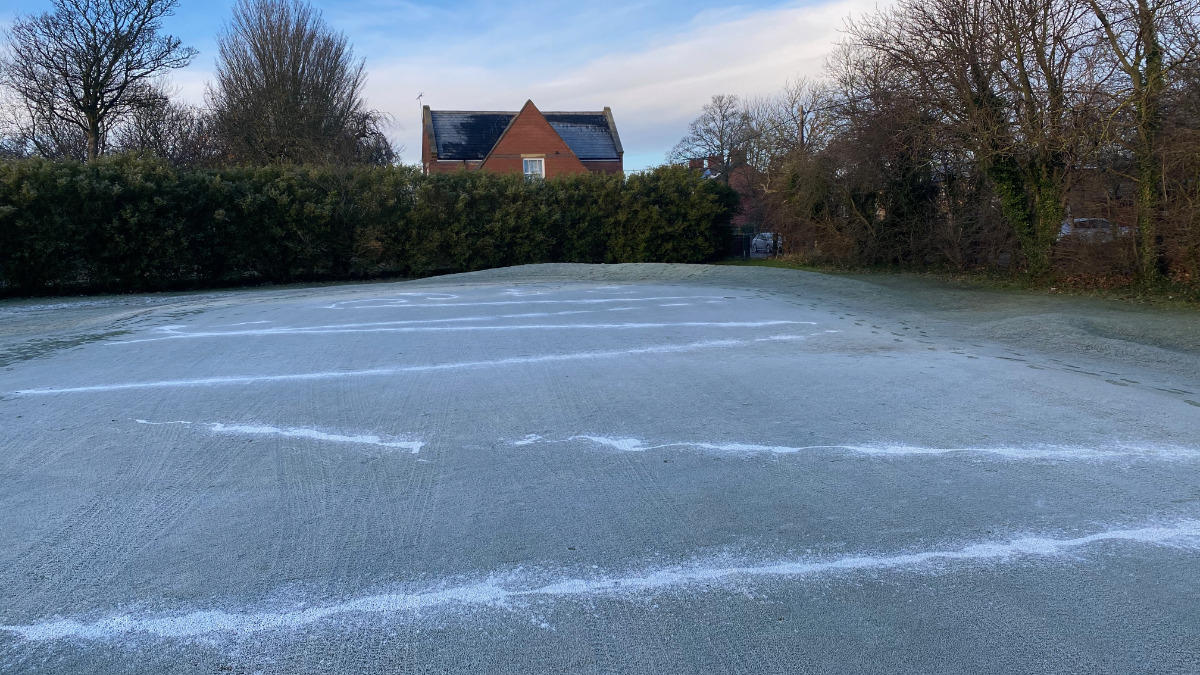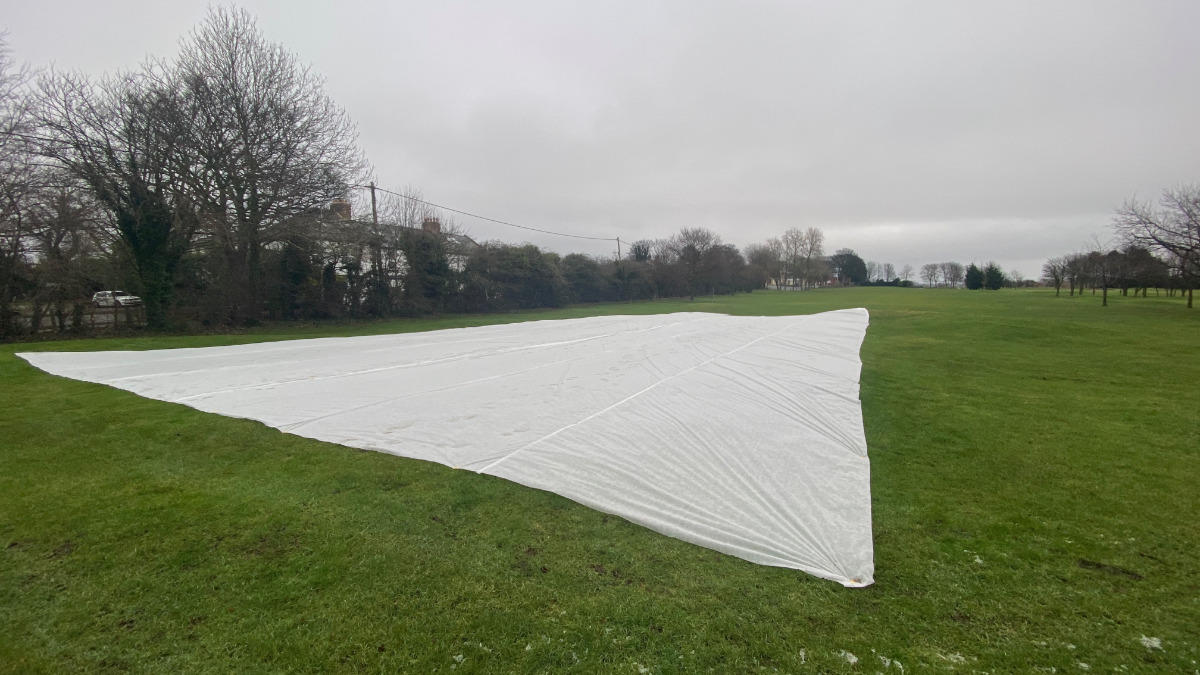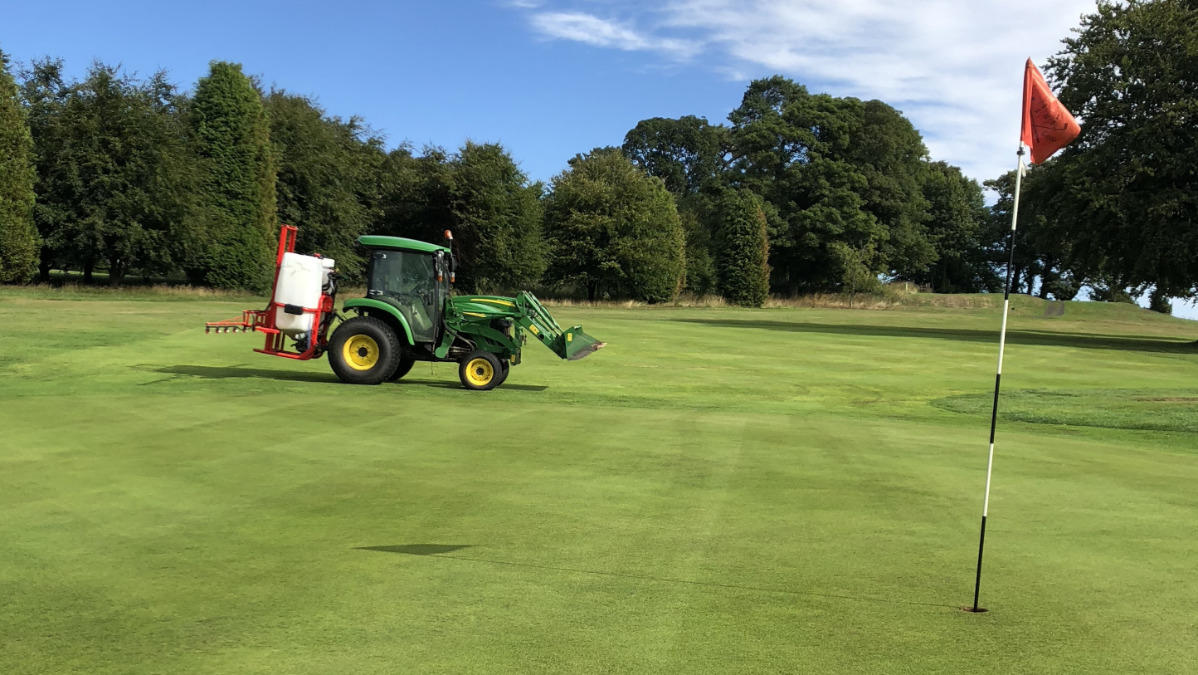- Homepage
- News and Features
- When the Boldon golf course was damaged by vandals, the greenkeeping team sprang into action
When the Boldon golf course was damaged by vandals, the greenkeeping team sprang into action

On Saturday 23 January it was discovered that eight of our main greens, the putting green and the chipping green had been vandalised, with diesel poured in a zig‑zag pattern across the majority of the putting surface.
It’s estimated that the damage will cost £70,000 to remedy and an investigaton was launched by Northumbria Police to try and find the culprits. A member of the club has very kindly offered a substantial reward for any information that leads to a successful prosecution. It was heart breaking that this happened and we need to catch those responsible, but first and foremost, my priority was the recovery of the greens back to the standards we have come to expect at Boldon.
While this was a devastating attack that will cause disruption to play, the team and I were confident that the plan we had in place was the correct course of action and would keep disruption to a minimum.
A golf club has been hit with a £70,000 bill after vandals poured diesel on the course’s greens. ⛳
— Northumbria Police (@northumbriapol) February 24, 2021
The damage happened at #Boldon Golf Club last month. We and the club have issued a joint appeal for information to trace those responsible.
More here 👉 https://t.co/KgorUl12dc pic.twitter.com/sWI5jeNnSf
First response
Initially there was a prolonged frost lasting six days, which we believe slowed the percolation of diesel into the soil. With the diesel sitting closer to the surface, it turned into a snow‑like substance which, using snow shovels and some volunteers, we were able to remove from the greens.
The initial hope was that the frost would stop the diesel contaminating the subsoil. We took a sample of an effected area and accelerated its growth in a warmer environment. This gave us an early indication of how the greens would respond to the treatments we use.
Upon taking this sample it was clear that some diesel had already percolated down three inches. While this was disheartening and a blow to a quick recovery, it was also to be expected and would have no effect on the treatments we were putting in place.
Hydrocarbon breakdown
With the removal of any excess diesel on the surface and evidence that it had percolated into the subsoil, the frost was then hindering the recovery process.
Diesel contains hydrocarbons that are toxic to grass. Not only would the diesel kill our grass coverage, but it would also remain present in the soil, killing any seed or turf we apply to the affected area.
There is a product available on the market called Remediact that can be applied to introduce microbes to the subsoil. Once the microbial activity starts (typically at a soil temperature of 70C), the microbes begin to break down and feed on the hydrocarbons. The more hydrocarbons that are present, the faster they spread and multiply until there is nothing left to feed on. This leaves a mostly hydrocarbon‑free subsoil. If applied immediately after diesel contamination, the grass plant can be saved, with only a discolouring evident before full recovery.
This is where the prolonged frost was then hindering our recovery. Remediact needs to be applied with no frost present so that it can move from the grass plant to the subsoil. Applying in frosty conditions significantly reduces its effectiveness.
During the summer months, when soil temperatures and microbial activity are high, the product works within 10 days. Because we were in winter with low temperatures and low microbial activity, it could take four to six weeks for the hydrocarbons to be broken down.
Germination sheets
With temperature having a significant impact on the recovery, the club purchased germination sheets. These are pinned onto the green and create a greenhouse effect that results in an increased ground temperature.
On 27 January we applied a germination sheet to the 1st and 6th greens to ensure they were fully thawed for the application of Remediact. Typically, these greens hold onto frost a little longer than the others.
After the application of Remediact, we used the germination sheets in rotation. While they provide an increased temperature, they also restricted sunlight and airflow and because of this we monitored each green individually.

Hydrocarbon migration – cultural practices
Once the Remediact had run its course, the next stage was to move any remaining hydrocarbons down away from the surface. Creating porosity and pore space within the soil accelerates this. We verti‑drained using a 0.5‑inch tine to a depth of 10 inches.
To ensure any seed or turf we applied
had a good growing medium we also micro hollow cored using an 8mm tine to a depth of 100mm. As well as aerating, coring also removes some of the existing subsoil that we then cleared and
replaced via topdressing to improve the growing medium.
Hydrocarbon migration – Blockade
With the hydrocarbons broken down and the subsoil primed, we then applied a product called Blockade. This product percolates through the subsoil via water and it absorbs any remaining hydrocarbons, pulling them away from the surface. This migration maximises the reduction of hydrocarbons in our subsoil, which further improves it as a growing medium.
Plant health
Following the vandalism, we then experienced a period of heavy rainfall which caused the greens to flood. With this the diesel spread over the surface, potentially creating a bigger site of contamination.
To ensure the greens as a whole have every chance of defending themselves against the diesel, we applied small amounts of nutrition biweekly via a foliar fertiliser, which will create vigorous health within our existing grass plant while also preparing the subsoil for replanting.
Overseeding
At the time of writing it was unclear how much, if any, grass coverage will be lost. I’ve spoken to the product suppliers, along with some end users, all of whom are confident. I’m also extremely hopeful that the plan we have in place to rectify this widespread damage is the best option available to support a swift recovery.
Once we were confident that the hydrocarbon levels were significantly » »reduced, we reseeded the vandalised greens. This will ensure any turf loss is regained, along with localised re‑turfing.
Bio‑stimulant
Finally, to boost the subsoil as a growing medium, we further stimulated the soil biology using a bio‑stimulant. This will increase the success of any seed or turf we apply while also promoting the natural migration of the surrounding grass plant. After this our normal maintenance plan and routines will continually improve the putting surfaces until we achieve our normal high standards of performance.

Summary
In short, the people responsible for the vandalism went to great lengths to ensure damage was caused on a large scale. As I write this, it has been eight weeks since the vandalism occurred. During that time, we have excelled in some aspects of recovery and come up short in others.
While for the most part we’ve had dry, windy weather conditions that are favourable for recovery, we are still falling short with soil temperatures peaking at 50C. The chemical aspect of the recovery process relies on an active soil biology, which typically starts at 70C. With reduced soil temperatures, the chemicals have worked in terms of breaking the hydrocarbons down. However, not at a quick enough rate to save grass coverage. There was always a strong likelihood of this happening and this is why we created a physical plan to aid recovery.
It is at this point where I must thank the club’s management team. Additional funding was granted to ensure we utilised the best methods available to us at a time where the results could be maximised.
Daily recording of soil temperatures clearly identified that we would struggle to save grass coverage on the affected areas. Immediate major renovations were proposed before the return of golf to speed up the recovery process and to reduce disruption to our membership.
We changed the planned verti‑drain and micro‑core renovations to a full 13mm hollow core and GKB Sandfiller.
Once these two renovations were completed, we applied a granular fertiliser to promote a speedy recovery. The greens were then overseeded to further encourage the recovery of effected areas.
An additional GKB Sandfiller renovation will also be carried out once the greens are healthy enough. This is likely to take place in May when the recovery process will be quicker.
The Remediact has broken down the hydrocarbons within the soil sufficiently enough to allow transplanting of turf to be carried out without the worry of spreading contamination. The process we’re using is plugging, which is the same process as we use for changing the pin placements each week. We’ve chosen this process of re‑turfing because not only does plugging keep the root system intact with the grass plant, but it also removes the 2.5 inches of potentially toxic subsoil. Turfing may be quicker but because of its shallower depth, it separates the plant from the root system.
The plugging process involves swapping damaged turf from the centre of the green and replacing it with healthy turf from the edge. This gives instant health to the centre of the green, while the edge receives less stress from golf and mechanical operations, which will speed up recovery.
Once we have established sufficient pin placement areas on all the greens, we will move on to other areas that have been affected. This will continue until all unhealthy turf has been transplanted.
To summarise, we were unable to save grass coverage but have broken down hydrocarbons within the soil enough to replant. The replanting process has begun along with substantial renovations that will improve greens performance for years to come. While we are going to experience short‑term disruption to play, the damage is superficial and the recovery process will result in a long‑term benefit to the performance
of the greens.
Continue the conversation: Jack is on Twitter at @Jack2heff
Jack was writing for Greenkeeper International and has won himself a £100 Continue to Learn voucher. He will also be entered into a draw to win £750 and an all-expenses-paid trip to Florida, when restrictions allow. If you'd like to get involved, email GI editor Karl Hansell on [email protected]
Author

Jack Hetherington

